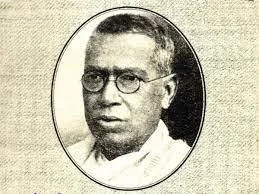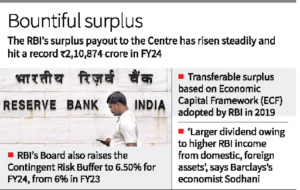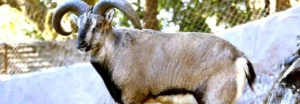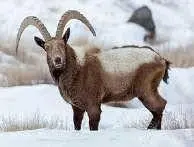UPSC GS 1
Bipin Chandra Pal (1858-1932)
- News: Eminent freedom fighter and nationalist leader Bipin Chandra Pal was remembered on his death anniversary.
- Early Life and Leadership: Born in Sylhet district (now in Bangladesh), he was a prominent leader of the extremist faction alongside Lala Lajpat Rai and Bal Gangadhar Tilak, known as the “Lal-Bal-Pal” trio.
- Philosophy and Advocacy:
-
- Advocated for Swadeshi (self-reliance), boycotting British goods, and promoting the use of indigenous products.
- Believed social reforms were necessary for a strong national identity.
- Opposed the caste system and advocated for widow remarriage.
- Championed the rights of workers and fair wages.
- Preached ‘composite patriotism’ as opposed to Bal Gangadhar Tilak’s Hindu nationalism.
-

- Publications and Legal Issues:
-
- Important publications: Bande Mataram (daily), New India (Weekly Journal), Hindu Review (Monthly).
- Imprisoned for 6 months in the Bande Mataram sedition case.
-
- Literary Contributions: His book ‘The Soul of India’ (1911) promoted pride in India’s civilizational heritage and rejected Western superiority.
Ujani Dam
- News: The bodies of persons who drowned after their boat capsized in the Ujani dam were fished out recently.
- Location of Dam: Located on the Bhima River near Ujjani village in Solapur district of Maharashtra.
- Construction and Structure: Ujani Dam is an earth-fill cum masonry gravity dam constructed between 1977 and 1980.
-
- Total length of 2,534 meters, founded on massive basaltic rock formations.
- Central portion serves as the spillway dam, with a length of 602 meters.
- Dam stands at a height of 63 meters.
-
- Purpose: Constructed primarily to provide irrigation water and hydroelectric power to the region.
- Storage Capacity:
-
- Total storage capacity of 117 thousand million cubic feet (TMC).
- Live storage capacity of 54 TMC, while 63 TMC is dead storage.
- Power Generation Capacity
- Has a power generation capacity of 12 megawatts (MW).
-
- Pollution: The water quality of Ujani Dam is poor due to hazardous pollutants from Pune and other small cities located on the banks of the Bhima River or its tributaries.
- Overview of Bhima River:
-
- Location and Importance: The Bhima River, also known as the Chandrabagha River, is a major river in southwest India.
- It is a significant tributary of the Krishna River.
- Course: Originates in the Bhimashankar hills near Karjat on the western side of the Western Ghats, in Pune District of Maharashtra.
- Flows southeast through Maharashtra, Karnataka, and Telangana states.
- Merges into the Krishna River at Kadlur (Raichur) in Karnataka.
- Geographical Features: The river stretches for 861 kilometers, with the Western Ghats to the west, the Balaghat Range in the north, and the Mahadeo Hills in the south.
- The total basin area of the river is 48,631 square kilometers, with 75 percent lying in Maharashtra.
- Tributaries:
- Major tributaries include the Sina and Nira rivers.
- Significant Location: Pandharpur, an important pilgrimage center, is located on the right bank of the Bhima River.
-
UPSC GS 2
Bay of Bengal Initiative for Multi- Sectoral Technical and Economic Cooperation (BIMSTEC)
- News: The Bay of Bengal Initiative for Multi-Sectoral Technical and Economic Cooperation (BIMSTEC) will now allow new members and observers to join as the BIMSTEC Charter comes into force.
- Definition: The Bay of Bengal Initiative for Multi-Sectoral Technical and Economic Cooperation (BIMSTEC) was established on 6 June 1997 with the signing of the Bangkok Declaration.
-
- Initially named BIST-EC (Bangladesh-India-Sri Lanka-Thailand Economic Cooperation), it later became known as BIMSTEC.
-
- 1st BIMSTEC Summit: 31 July 2004 in Bangkok, Thailand
- Current Chair of BIMSTEC: Thailand
- Member States: The organization comprises seven Member States, including:
-
- Bangladesh,
- India,
- Sri Lanka,
- Thailand,
- Myanmar
- Bhutan,
- Nepal .
-
- Aim of BIMSTEC:
-
- Promoting Regional Cooperation and Economic Integration: Aims to foster collaboration and integration among nations in the Bay of Bengal region.
- Sector-Driven Cooperation: BIMSTEC operates as a sector-driven cooperative organization, focusing on 14 priority sectors such as trade, technology, energy, transport, tourism, and fisheries, among others.
-
- Significance:
-
- BIMSTEC region is home to around 1.8 billion people, nearly 22 percent of the global population with a combined gross domestic product (GDP) of US$3.6 trillion.
- All seven countries have sustained average annual rates of growth between 3.4% and 7.5% from 2012 to 2016.
- A fourth of the world’s traded goods cross the bay every year.
-
- Adoption of BIMSTEC Charter: The BIMSTEC Charter was adopted during its 5th Summit in March 2022, chaired by Sri Lanka.
-
- This formal document outlines the principles, objectives, and structure of BIMSTEC.
- BIMSTEC charter has now come in effect and is expected to boost India’s efforts to strengthen its role as a key player in the region.
-
- Key Features of BIMSTEC Charter:
-
- Legal Framework Establishment: Previously functioning under a Declaration from 1997, the charter now provides BIMSTEC with a legal framework, granting it international legal personality.
- Diplomatic Dialogue Enhancement: BIMSTEC can now engage in structured diplomatic dialogue with other groupings and countries, facilitating smoother collaborations.
- Membership Process Clarification: The charter defines the member states of BIMSTEC and outlines the process for admitting new members, ensuring transparency and consistency.
- Recognition of Symbols: The charter officially recognizes the BIMSTEC emblem and flag as symbols of the organization, enhancing its visibility and identity.
- Structured Decision-Making: With a clear structure and framework for decision-making and program implementation, BIMSTEC strengthens its position in the international arena, facilitating efficient operations and collaboration.
-
- Headquarters: Dhaka, Bangladesh
Prime Minister Wi-Fi Access Network Interface (PM-WANI) Scheme
- News: Public Wi-Fi hotspots under the PM-WANI scheme are nearing the 2-lakh mark.
- Launch Details: Launched by the Department of Telecommunication in 2020.
- Aim of PM-WANI: PM-WANI aims to increase public Wi-Fi hotspots, improving internet access in rural India.
- Scheme Elements:
-
- Public Data Offices (PDOs): Set up and manage Wi-Fi hotspots.
- Public Data Office Aggregators (PDOAs): Provide authorization and accounting services.
- App Providers: Develop an app for user registration and hotspot discovery.
- Central Registry: Stores details of all participants.
-
- For Accessing Public Hotspots: To access public hotspots under the PM-WANI scheme, download a relevant app that shows available networks.
-
- The user can then choose from a list of available connections and make a payment to use the network until the balance is exhausted.
-
International Criminal Court (ICC)
- News: Israeli Defence Minister Yoav Gallant has rejected the arrest warrants sought by the International Criminal Court’s prosecutor for him and Prime Minister Benjamin Netanyahu.
- International Criminal Court (ICC): It was established in 1998 under the “Rome Statute”.
- Membership:
- Britain, Japan, Afghanistan, and Germany are members of the ICC.
- India, USA, China, Russia, and Ukraine are not members of the ICC.
- Aim: Aim is to end impunity through international criminal justice.
- Jurisdiction and Crimes: Crimes within its jurisdiction include genocide, war crimes, crimes against humanity, and crimes of aggression.
- Functionality:
-
- Investigates and tries individuals charged with the gravest crimes of concern to the international community.
- Complements national criminal systems, not replace them.
- Prosecutes cases only when States are unwilling or unable to do so genuinely.
-
- Enforcement: ICC does not have its own police force or enforcement body. It relies on cooperation with countries worldwide for making arrests, transferring arrested persons, freezing suspects’ assets, and enforcing sentences.
- Relationship with UN:
-
- The ICC is independent of the United Nations (UN), but is endorsed by the UN General Assembly.
- It also maintains a cooperation agreement with the UN.
- Unlike the International Court of Justice (ICJ), which is an organ of the UN, the ICC does not prosecute states.
-
- HQ: Hague, Netherlands.
UPSC GS 3
Economic Capital Framework
- News: The Reserve Bank of India’s board has approved the transfer of a record ₹2,10,874 crore as surplus to the Union government for the accounting year 2023-24 on the basis of the Economic Capital Framework (ECF).

- Overview of Economic Capital Framework:
-
- The economic capital framework provides a methodology for determining the appropriate level of risk provisions and profit distribution under Section 47 of the RBI Act, 1934.
-
- Provisions under Section 47:
-
- As per Section 47, the central bank is mandated to pay the balance of its profits to the central government after making provision for bad and doubtful debts, depreciation in assets, and contributions to staff.
-
- Recommendation by Expert Committee:
-
- The framework was recommended by the Expert Committee to Review the Extant Economic Capital Framework of the RBI, aiming to ensure prudent risk management and efficient profit distribution within the central banking system.
-
Reading between the Lines: The Hindu 24 May 2024: What you should not miss!
Bharal (Pseudois nayaur)
- News: Wildlife authorities in Himachal Pradesh’s Lahaul & Spiti district have begun surveys to estimate the populations of blue sheep (bharal) and Himalayan ibex.
- General Information: Bharals are also called the blue sheep.
-
- They are native to the high Himalayas.
-

- Geographical Distribution:
-
- Found in India, Bhutan, China (Gansu, Ningxia, Sichuan, Tibet, and Inner Mongolia), Myanmar, Nepal, and Pakistan.
- Helan Mountains of Ningxia have the highest concentration.
-
- Physical Description:
-
- Males are slightly larger than females.
- The short, dense coat is slate grey in colour, sometimes with a bluish shine.
- The underparts and backs of the legs are white, while the chest & fronts of the legs are black.
- It has horns that grow upwards, curve out, and then towards the back.
-
- Diet: Herbivorous, feeding on grasses, herbs, and shrubs.
- Conservation Status:
-
- IUCN: Least Concern Threats
- Indian Wildlife Protection Act: Schedule I
-
- Threats: Poaching for meat.
-
- Competition with livestock.
-
- Himalayan ibex (Capra sibirica hemalayanus)
-
- General Information: It is a subspecies of the Siberian ibex.
-

-
-
-
- Distribution:
- Native to the Himalayan region of India, Pakistan, Tibet, and Nepal.
- Found in several parts of India, primarily in the states of Jammu and Kashmir, Himachal Pradesh, and Uttarakhand.
- Taxonomy: Belongs to the genus Capra in the family Bovidae.
- Found in the mountains of Europe, Asia, and northeastern Africa.
- Habitat:
- Inhabit high-altitude regions of the Himalayas, including the Trans-Himalayan region.
- Elevation range: 3,000 to 5,800 meters.
- Physical Features
- Adult weight: about 90 kgs.
- Height: around 40 inches tall.
- Males are larger than females.
- Huge curved horns with notches on the front that grow each year.
- Light brown to reddish-brown coat, with a white belly and black and white markings on their legs.
- Thick and woolly coat in winter, shed in early summer.
- Coat color ranges from pale brown to dark brown, with a darker dorsal stripe.
- Behavior:
- Usually found in small herds, sometimes up to 50 individuals.
- Can run at a speed of up to 50 km/h.
- Conservation Status: IUCN Red List: Near Threatened.
- Distribution:
-
-
World Hydrogen Summit 2024
- News: At the World Hydrogen Summit 2024 in Rotterdam, Netherlands, India highlighted its strategic vision in renewable energy and green hydrogen production.
- Organizers and Partners: World Hydrogen Summit 2024 was organized by the Sustainable Energy Council in partnership with the Netherlands government.
- Green Hydrogen (GH2): GH2 is produced by splitting water into hydrogen and oxygen using renewable energy sources.
- India’s Initiatives to Promote GH2:
-
- National Green Hydrogen Mission (NGHM): Launched in 2023 with the aim of achieving a GH2 production capacity of 5 MMT (Million Metric Tonnes) by 2030.
- Strategic Interventions for Green Hydrogen Transition Programme (SIGHT): Part of NGHM, provides financial incentives for manufacturing electrolysers and GH2 production.
- Dedicated Portal for NGHM: Serves as a one-stop location for information on the Mission.
- Bureau of Energy Efficiency (BEE): Designated as the Nodal Authority responsible for accrediting agencies for monitoring, verification, and certification of processes for GH2 production projects.
-
- Concerns with Hydrogen-based Fuel:
-
- Lack of infrastructure for production, transportation, flammability, and storage of hydrogen.
- High cost associated with hydrogen-based fuel.
-
Facts for Prelims
International Booker Prize 2024
- News: International Booker Prize 2024 announced.
- 2024 Prize: “Kairos” written by Jenny Erpenbeck (translated by Michael Hofmann) has won the 2024 International Booker Prize.
- Overview:
-
- The International Booker Prize is a prestigious literary award recognizing the best translated work of fiction worldwide.
- Established in 2005, it celebrates cultural diversity and excellence in translated literature.
-
- Aim:
-
- The prize aims to foster the publishing and reading of high-quality fiction from diverse cultures.
- Additionally, it seeks to elevate the role of translators by promoting their invaluable contributions in making global literature accessible to English-speaking audiences.
-
- Eligibility and Selection:
-
- Books considered for the International Booker Prize must undergo translation into English and be published in the UK or Ireland.
- This criteria ensures a wide range of international voices are considered for the award, while also emphasizing the importance of translation in literary exchange.
-
- Equal Distribution of Prize Money
-
- An integral aspect of the International Booker Prize is the equal sharing of prize money between the author and the translator.
- This practice acknowledges the collaborative effort involved in bringing foreign literary works to English readership, thus highlighting the crucial role of translation in broadening cultural horizons.
-
